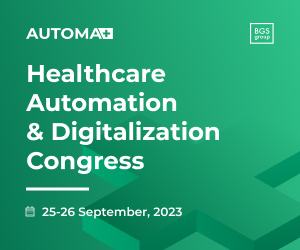Burnout is rampant among clinical trial monitoring staff and patients but orchestrating various technological tools into a single integrated platform offers potential relief. Over the past decade, clinical trials have become increasingly patient-centric and accessible, thanks to the adoption of mobile devices, sensors and wearables. While these innovations have improved patient recruitment, retention and satisfaction in research participation, they have also increased the burden on site staff. As the clinical trial environment evolves, it is critical to offset these challenges with tools that streamline and simplify clinical research for sponsors, site staff, and patients.
Studies show the stress of dealing with sponsor contracts, high daily workload and constant staff turnover are all factors in the ongoing burden of researchers. Patient retention challenges cause additional work and stress, while the use of multiple technology tools makes it challenging to reconcile the data across multiple systems.
Integrated technology combined with unified platform delivery drives study orchestration and optimization for teams using Integrated Response Technology (IRT) and Electronic Clinical Outcome Assessments (eCOA) to improve study quality, reduce site and sponsor effort and accelerate decision making during clinical trial conduct.
Benefits of a Unified IRT eCOA Solution
An orchestrated solution encompassing IRT and eCOA systems allows sponsors to simplify the entire trial process from planning to close-out. By eradicating redundant, manual activities, the technology decreases the research staff’s administrative burden. It enables researchers to reduce the time it takes to complete individual tasks, impacting the overall timeline of the trial. Patients, sponsors and other stakeholders can all benefit substantially from an orchestrated IRT eCOA solution.
Sponsor Benefits
Sponsors gain many advantages from converged systems, such as improved communications with vendors, a streamlined and integrated specification process, unified user acceptance testing (UAT) and a configurable, validated platform compatible with a customized installation. Automation reduces duplication, redundancies and human error. All these factors improve the quality of data, shorten the time to database lock and contribute to lower costs and better outcomes.
Staff Benefits
Eliminating some of the challenges facing research staff helps mitigate burnout risks, and an orchestrated system offers several ways to do this:
- Site users can access data, dashboards and reports in one location using a single login. The eCOA setup for each patient is simpler, whether it is done on-site or remotely. When researchers use eCOA scores for screening, randomization, titration or any other IRT purpose, orchestration results in timely, accurate study progression.
- Automation removes repetitive tasks, such as enrolling patients individually across two systems, managing patient dropouts and updating consent withdrawals. Creating a site for IRT automatically creates a site for eCOA. Fewer errors and duplications minimize the requirement to reconcile data between solutions, while streamlined data flows and detailed reporting lead to faster, better decision-making.
- Managing eCOA device inventory through IRT eliminates the need for a separate device management system and can lead to more accurate and timely device management. Managing device provisioning through IRT’s advanced study medication and inventory system produces a trackable solution for device management that leverages IRT’s full chain of custody functionality.
Moreover, integrated training, round-the-clock help desks and simplified study guides reduce staff effort and saves time and money on training. These advantages result in greater efficiencies and better outcomes, leading to improved staff morale and less burden.
Patient Benefits
The benefits of an orchestrated IRT eCOA platform also trickle down to trial participants, ultimately benefiting patient outcomes. For example, patients and caregivers can respond to assessments, report symptoms and input results directly in real time. This results in better quality data and faster access to insights.
The improved workflow achieved by a combined solution also allows site personnel to spend more time with patients and less dealing with administration, resulting in deeper, more qualitative insights into their trial experience.
Superior Results, Greater Cost Efficiencies
Orchestrating an integrated IRT eCOA solution powered by real-time data streamlines many of the more cumbersome aspects of clinical trials. This reduces the burden on site staff, empowers patients to take ownership of their participation and provides sponsors with superior results in shorter timeframes and greater cost efficiencies.
BIO: Helen brings over 17 years of deep expertise from the clinical research industry and significant global experience working with various CROs, supporting clinical operations teams across, Asia, Middle East, Europe and US. Her expertise includes Clinical monitoring, Project management, Regulatory affairs, and Clinical technologies such as IRT and eCOA. Helen has been a part of IQVIA /Cenduit leadership team since 2015, She has recently taken on responsibility as IRT eCOA customer success lead and supporting North America Project Management team at Cenduit. Prior to her stint at IQVIA, Helen held several positions across various global CROs. Helen is based out of IQVIA headquarters in Durham, North Carolina.












